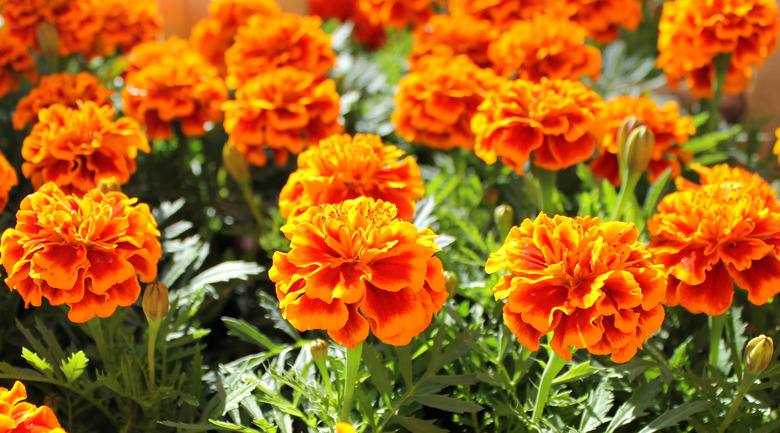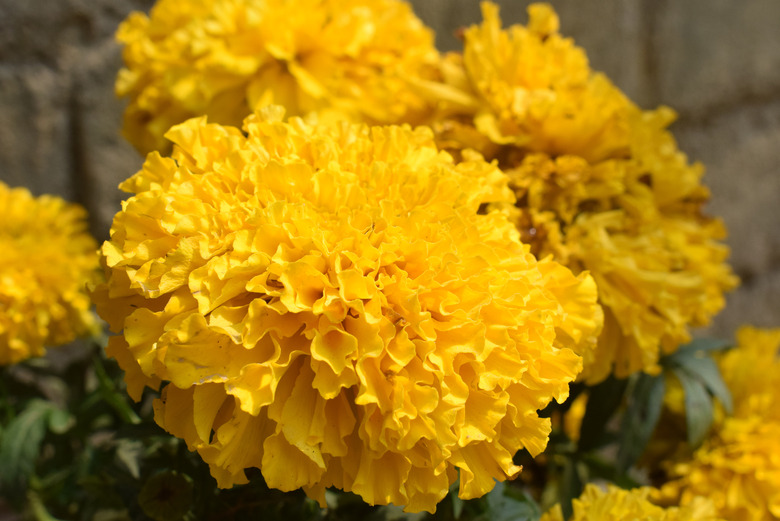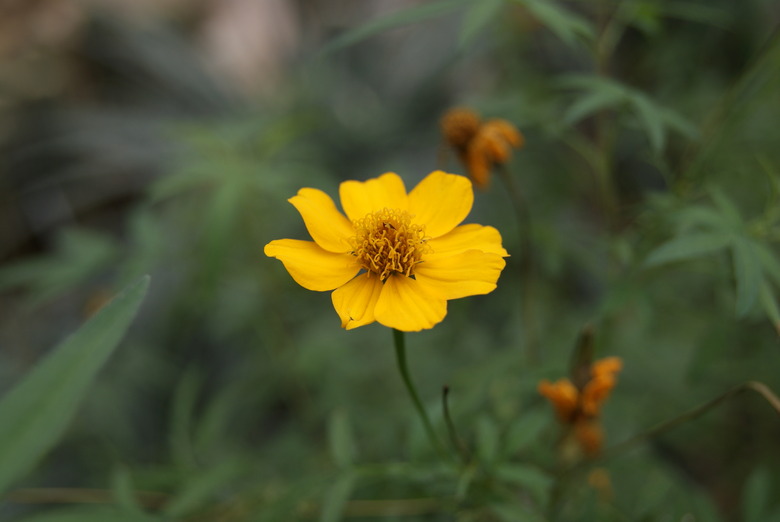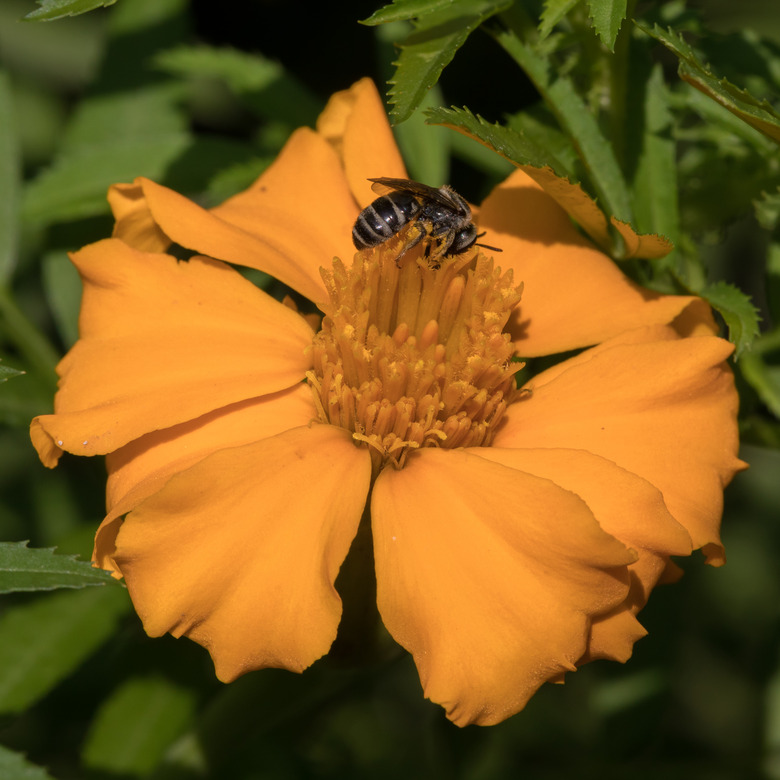Is The Marigold Flower An Annual Or A Perennial?
Knowing if a marigold (Tagetes spp.) variety is annual or perennial is important information for determining where and when to plant them in your garden. According to the North Carolina State University Cooperative Extension, roughly 49 species belong to the genus Tagetes and share the common name marigold.
Most common marigold varieties are annuals, but there are also a few perennial marigold varieties that will persist in the garden year after year. Although they vary in life cycle and hardiness, marigolds all share similarities in appearance, growing conditions and care requirements.
Tip
Most common marigold varieties are annuals but there are perennial varieties, as well.
Annual Marigold Varieties
Most bedding marigolds found in garden nurseries are annuals, including the African marigold (Tagetes erecta), French marigold (Tagetes patula) and signet marigold (Tagetes tenuifolia). All share similar-looking flowers with golden yellow or orange coloring and lacy, segmented foliage, but they also have significant differences, as well.
African marigolds are the tallest of the three, for instance, reaching 3 to 4 feet in height; French and signet marigolds grow to between 6 inches and 2 feet, depending on the cultivar.
Annual marigold varieties share many qualities but are not exactly alike. Not only do marigolds need full sun, all varieties also need fast-draining soil that will retain moisture during hot weather.
Signet marigolds perform well in hot, dry gardens, whereas French marigolds will tolerate rainy or wet conditions. African marigolds adapt to a wide range of growing conditions and will tolerate clay-based or dry soil with no problem, but they look best when planted in a moist, well-drained site, according to the North Carolina State University Cooperative Extension.
Perennial Marigold Varieties
Only a couple of cultivated marigold varieties are perennial. Not only will these marigolds come back after frost if they are perennial, they may not die back at all if grown under the right conditions.
Mount Lemon Marigold
One low maintenance variety is Mount Lemon marigold (Tagetes lemmonii), which is native to the southwestern United States and also known as the Mexican marigold. According to the Arizona State University Extension, it grows best within U.S. Department of Agriculture plant hardiness zones 8 to 11, where it makes a drought-tolerant addition to landscaping.
It shares the same golden orange flowers and pinnate foliage as other marigold varieties but it reaches a mature height of 5 to 8 feet.
Mexican Tarragon Marigold
Another perennial marigold variety is Mexican tarragon (Tagetes lucida), which grows best in USDA plant hardiness zones 9 to 11. It does not bloom with the same showy flowers as other marigold varieties but has a tall, graceful growth habit and slender foliage that make it a striking addition to landscaping.
According to the UIC Heritage Garden, Mexican tarragon is widely grown for its fragrant foliage, which is used in cooking and traditional medicine.
When to Plant Marigolds
**Annual Marigolds:** These must be started from seed or replaced with garden center transplants each year because they die back with the frost in autumn.
French marigolds grow well when started from seed directly in the garden or indoors four to six weeks before the last spring frost. African marigolds grow more slowly and take longer to become established than French marigolds and should be started indoors eight to 10 weeks before the last spring frost, recommends Clemson Cooperative Extension.
After the last spring frost, acclimate the seedlings to outdoor conditions for a week or so before transplanting them into the garden.
**Perennial Marigolds:** These can be planted in the spring after the last frost, or in autumn. Fall planting works best in climates with a mild, rainy winter with no hard frost. Spring planting works in all areas but the plants will need regular watering during their first summer in the garden to help them put down deep roots.
Perennial marigolds are typically propagated from cuttings or seeds, although cultivated varieties will not grow true from seed.
What to Do with Marigolds in Winter
The question of what to do with marigolds at the end of the season depends on whether the marigold is annual or perennial.
**Annuals:** Annual marigolds typically die back with the frost in colder climates but will survive the winter months in mild areas. Dead marigolds can be pulled up and thrown away or tilled into the bed to enrich the soil.
Potted marigolds can be brought indoors or placed on a porch during cold weather, then returned to their original location once temperatures warm up again. Keep them watered and covered with a lightweight cotton sheet to protect their foliage.
**Perennials:** Perennial marigolds need little upkeep during the winter months besides light mulching around their base.
The UC Master Gardeners of Butte County note that Mexican marigolds often die back with hard frost, but they will return in spring. Some growers opt to cut back the plant by half, while others opt to leave the seed heads in place to provide winter forage for birds.
References
- North Carolina State University Cooperative Extension: Tagetes
- Arizona State University Extension: Tagetes Lemmonni
- North Carolina State University Cooperative Extension: African Marigold
- UIC Heritage Garden: Mexican Tarragon
- Clemson Cooperative Extension: Marigold
- UC Master Gardeners of Butte County: Echinacea, Tagetes, Grindelia, and Helianthus...Oh my!: Garden flowers in the Asteraceae family



